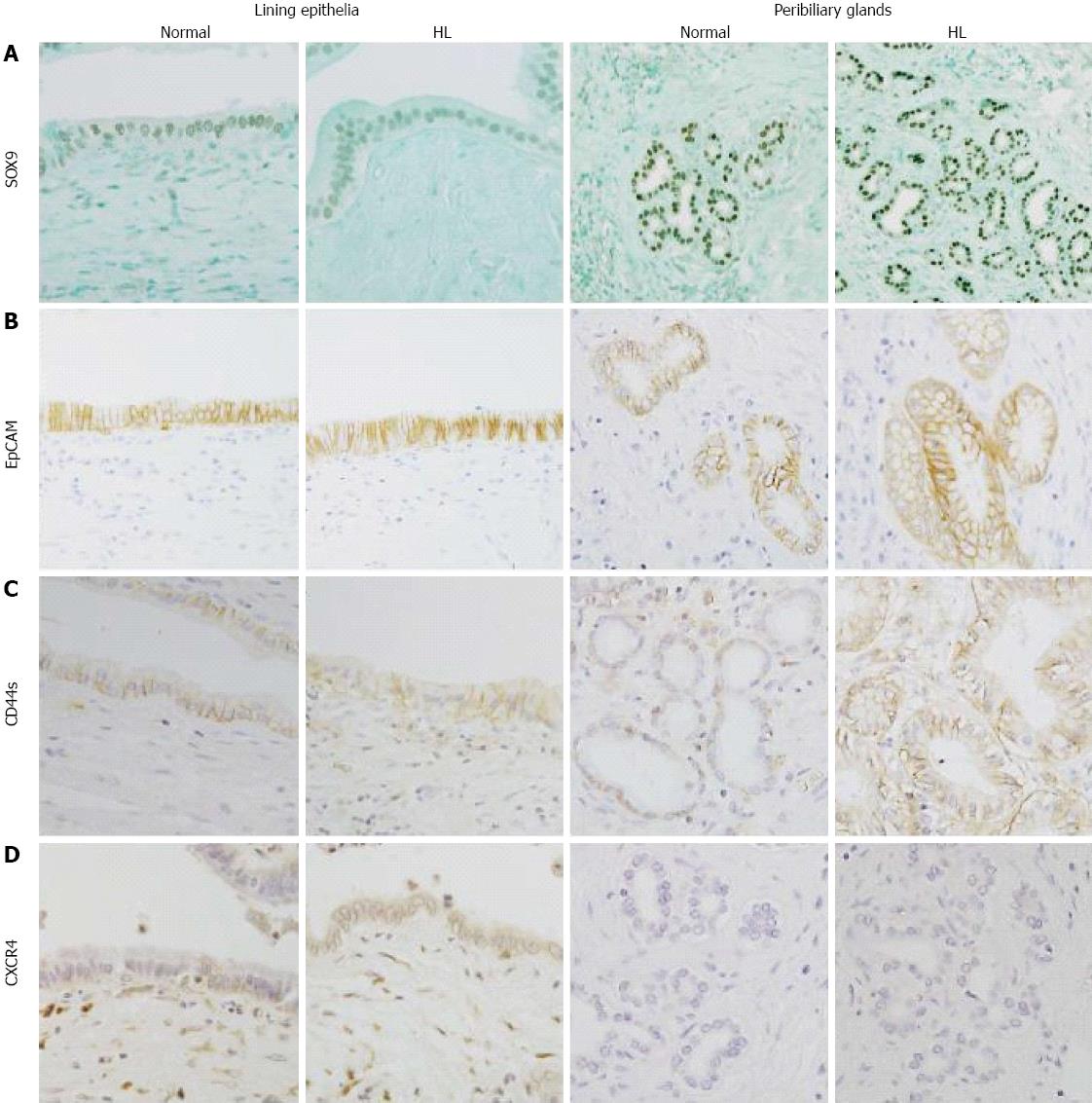Copyright
©2013 Baishideng Publishing Group Co.
World J Hepatol. Aug 27, 2013; 5(8): 425-432
Published online Aug 27, 2013. doi: 10.4254/wjh.v5.i8.425
Published online Aug 27, 2013. doi: 10.4254/wjh.v5.i8.425
Figure 3 Expression of SOX9, epithelial cell adhesion molecule, CD44s and chemokine receptor type 4.
A: SOX9 was expressed in the nuclei of the lining epithelia of hilar bile ducts in normal livers and of the peribiliary glands in hepatolithiatic livers (HL) (Immunostaining of SOX9, × 200); B: Many of the lining epithelial cells in the hilar bile ducts of normal livers were positive for epithelial cell adhesion molecule (EpCAM) and many of the acini in the peribiliary glands of hepatolithiatic livers were positive for EpCAM (Immunostaining of EpCAM, × 200); C: CD44s was focally expressed in the lining epithelia and peribiliary glands of hepatolithiatic livers (Immunostaining of CD44s, × 200); D: Chemokine receptor type 4 (CXCR4) was focally expressed in the lining epithelia and peribiliary glands of hepatolithiatic livers (Immunostaining of CXCR4, × 200).
- Citation: Igarashi S, Sato Y, Ren XS, Harada K, Sasaki M, Nakanuma Y. Participation of peribiliary glands in biliary tract pathophysiologies. World J Hepatol 2013; 5(8): 425-432
- URL: https://www.wjgnet.com/1948-5182/full/v5/i8/425.htm
- DOI: https://dx.doi.org/10.4254/wjh.v5.i8.425









